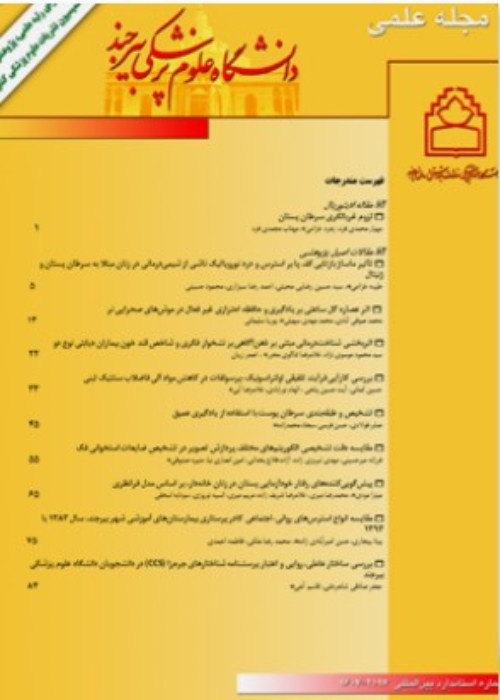Evaluation of anticandidial effects of Berberis vulgaris root extracts (ethanolic and aqueous) and comparing their effects with those of clotrimazole
Author(s):
Abstract:
Background And Aim
During the past three decades, life-threatening fungal infections have frequently been emerging through opportunistic infections with the advent of cancer chemotherapy, organ transplantation, and or AIDS. Most of systemic fungal infections are mainly caused by opportunistic pathogens such as Candida species. Although many researchers have carried out intensive studies attempting to develop new antifungal drugs some of which are now under clinical trials, amphotericin B and the azole compounds remain the mainstay of fungal systemic infection therapy. However, the adverse effects of polyenes and the emergence of Candida strains resistant to commercial azole compounds make the treatment of patients with deeply invasive mycoses difficult. Therefore, demand for the development of new antifungal agents which have low side effects and broad-spectrum activity against various fungi is greater than ever before. The present study aimed at evaluating the anticandidial effects of Berberis vulgaris Root extracts (ethanolic and aqueous) and comparing their effects with those of clotrimazole. Materials And Methods
In this experimental study, aqueous and ethanolic extracts of Berberis each having 1 mg/mL concentration were prepared. Candida albicans (100000 CFU/mL) was cultured on dextrose agar medium. Then, after incubation period of 48 hours, anticandidal strength of the extracts and clotrimazole was measured through zone of inhibition. Zone of inhibition for 1-10 mm was 1+, for 10-20 mm 2+, for 20 –30 mm 3+ and for 30-40 mm 4+. The obtained data was analysed by using SPSS software package, ANOVA and Tukey B tests. Resutls: Average zone of inhibition for aqueous extract of Berberis was 16.89 mm, for ethanolic extract of Berberis it was 27.69 mm, for pure ethanol 0 mm, and for clotrimazole 33.63 mm. Besides, these differences were statistically significant (P<0.001). Conclusion
According to our findings, Berberis vulgaris root extracts have anticandidal effects, and these effects are more prominent for ethanolic extract. Because ethanol, by itself, doesnt have any anticandidal effects (zone of inhibition=0), we can conclude that all of the anticandidial effects of ethanolic extract of Berberis are due to Berberis vulgaris root extract.Language:
Persian
Published:
Birjand University of Medical Sciences, Volume:13 Issue: 2, 2006
Page:
42
magiran.com/p414941
دانلود و مطالعه متن این مقاله با یکی از روشهای زیر امکان پذیر است:
اشتراک شخصی
با عضویت و پرداخت آنلاین حق اشتراک یکساله به مبلغ 1,390,000ريال میتوانید 70 عنوان مطلب دانلود کنید!
اشتراک سازمانی
به کتابخانه دانشگاه یا محل کار خود پیشنهاد کنید تا اشتراک سازمانی این پایگاه را برای دسترسی نامحدود همه کاربران به متن مطالب تهیه نمایند!
توجه!
- حق عضویت دریافتی صرف حمایت از نشریات عضو و نگهداری، تکمیل و توسعه مگیران میشود.
- پرداخت حق اشتراک و دانلود مقالات اجازه بازنشر آن در سایر رسانههای چاپی و دیجیتال را به کاربر نمیدهد.
In order to view content subscription is required
Personal subscription
Subscribe magiran.com for 70 € euros via PayPal and download 70 articles during a year.
Organization subscription
Please contact us to subscribe your university or library for unlimited access!



